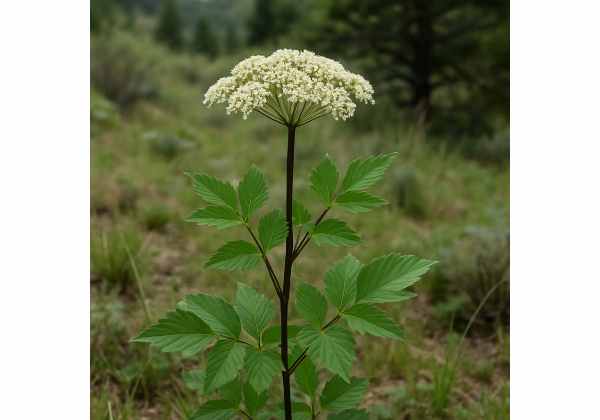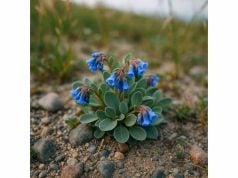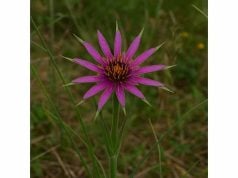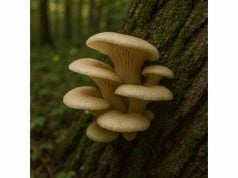
Osha is a revered herb, traditionally known as Bear Root (Ligusticum porteri), celebrated for its potent respiratory, anti-inflammatory, and immune-boosting properties. Used for centuries by Native American healers, this powerful medicinal plant is rich in bioactive compounds such as coumarins, flavonoids, and volatile oils that support respiratory health and overall vitality. Osha is typically prepared as a tea, tincture, or decoction to alleviate colds, coughs, and congestion, and it is also used to promote detoxification and reduce inflammation. Its versatility in natural healing makes Osha a valuable addition to both traditional and modern wellness practices.
Table of Contents
- Botanical Overview and Identification
- Phytochemical Profile and Active Compounds
- Holistic Health Benefits and Core Properties
- Practical Applications and Guidelines for Use
- Research Insights and Key Findings
- Frequently Asked Questions
Botanical Overview and Identification
Osha, scientifically known as Ligusticum porteri, is a member of the Apiaceae family. Native to the high-altitude regions of the Rocky Mountains in the United States and parts of Mexico, this perennial herb thrives in well-drained, rocky soils under full sun to partial shade. Traditionally referred to as Bear Root, Osha has been used by Native American tribes for its potent medicinal properties and its ability to thrive in harsh environments.
Taxonomy and Geographic Distribution
- Kingdom: Plantae
- Order: Apiales
- Family: Apiaceae
- Genus: Ligusticum
- Species: L. porteri
Osha is endemic to the mountainous regions of the southwestern United States, particularly in areas where cool, crisp mountain air and rugged terrain prevail. Its natural habitat ranges from rocky slopes to forest clearings, where it has adapted to thrive under conditions of limited water and nutrient availability. Today, wild populations of Osha continue to be an important part of the cultural heritage and biodiversity of these regions.
Morphological Characteristics
Osha typically grows between 1 to 3 feet in height and features a robust, fibrous root system that is highly prized for its medicinal qualities. The plant bears finely divided, aromatic leaves that are green and feathery, providing ample surface area for photosynthesis in its challenging habitat. During the summer months, Osha produces clusters of small, white to cream-colored flowers arranged in umbels, characteristic of the Apiaceae family. These delicate blooms not only add ornamental value but also play a critical role in attracting pollinators such as bees and butterflies, which are essential for the plant’s reproduction.
The most notable aspect of Osha, however, is its thick, knobby root. Harvested after several years of growth, the root is dried and aged to enhance its aromatic and medicinal properties. The drying process transforms the raw root into a highly potent material with a distinctive, earthy aroma, making it a coveted ingredient in herbal medicine and natural remedies.
Growth Conditions and Cultivation
Osha is well adapted to life in the mountains, where it endures extreme temperature fluctuations and low nutrient availability. It flourishes in soils that are sandy or rocky and benefits from a sunny, open environment that maximizes its growth potential. Propagation is generally achieved through seed dispersal, and the plant’s slow growth rate necessitates careful, sustainable harvesting practices to prevent overexploitation of wild populations.
Cultivators and herbal enthusiasts are increasingly interested in Osha not only for its medicinal benefits but also for its potential as a drought-resistant plant in xeriscaping. The plant’s resilience, combined with its low maintenance requirements, makes it an excellent candidate for sustainable gardening in arid and semi-arid climates.
Cultural and Historical Significance
Historically, Osha has been an integral part of Native American healing traditions. Indigenous tribes, including the Apache and Navajo, have long used Osha as a natural remedy for respiratory ailments, digestive issues, and even as a general tonic to boost the immune system. Its use in traditional ceremonies and healing rituals underscores its cultural importance, with the plant often considered a symbol of strength and resilience in the face of adversity.
The historical legacy of Osha extends beyond its medicinal applications. Its robust nature and striking appearance have also contributed to its use in folklore and traditional storytelling, where it is revered as a guardian of health and a protector against environmental challenges.
In summary, the botanical overview of Osha reveals a plant that is both rugged and revered. Its ability to thrive in harsh mountain environments, combined with its rich cultural history and potent medicinal qualities, makes Osha a fascinating subject for both botanical study and natural healing practices. The following section explores the complex phytochemical profile that underpins its therapeutic benefits.
Phytochemical Profile and Active Compounds
The therapeutic power of Osha is deeply rooted in its complex phytochemical composition. Modern analyses have identified a rich spectrum of bioactive compounds that work synergistically to provide a range of health benefits. Here, we present an in-depth examination of the key constituents found in Osha and their potential roles in natural healing.
- Coumarins
Coumarins are one of the primary groups of compounds found in Osha. These organic chemicals are known for their pleasant, sweet aroma and significant biological activities. In Osha, coumarins such as scopoletin and umbelliferone exhibit anti-inflammatory, anticoagulant, and antiviral properties. They play a crucial role in reducing inflammation and enhancing blood circulation, thereby supporting cardiovascular health and overall cellular protection. - Flavonoids
Flavonoids, including quercetin and kaempferol derivatives, are potent antioxidants that protect the body from oxidative stress. In Osha, these compounds help neutralize free radicals, reducing the risk of chronic diseases and supporting immune function. Their anti-inflammatory effects contribute to the relief of respiratory and digestive ailments, making them an essential component of Osha’s therapeutic arsenal. - Volatile Oils
The essential oils present in Osha are responsible for its distinctive, earthy aroma. These volatile compounds, which include various terpenoids, have been shown to possess antimicrobial and expectorant properties. By helping to loosen mucus and ease respiratory congestion, volatile oils play a pivotal role in Osha’s traditional use as a remedy for colds, coughs, and other respiratory conditions. - Phenolic Compounds
Phenolic compounds such as caffeic acid and ferulic acid are abundant in Osha and contribute significantly to its antioxidant capacity. These molecules help stabilize free radicals and prevent oxidative damage to tissues. Their role in reducing inflammation and supporting skin health further underscores the value of Osha as a natural therapeutic agent. - Alkaloids
Although present in smaller quantities, alkaloids in Osha contribute to its overall bioactivity. These nitrogen-containing compounds are known for their pharmacological effects, including analgesic and anti-spasmodic properties. Alkaloids help in moderating pain and discomfort, particularly in respiratory and gastrointestinal disorders. - Lignans
Lignans, another group of polyphenolic compounds, are noted for their antioxidant and estrogenic activities. In Osha, lignans support the body’s natural defense mechanisms and may have a role in modulating hormone-related processes. Their anti-inflammatory and antimicrobial properties complement the actions of other bioactive constituents, enhancing the overall efficacy of the herb.
The combined action of these bioactive compounds provides a scientific basis for the traditional uses of Osha. By working together, they create a synergistic effect that not only supports respiratory and digestive health but also contributes to overall wellness. Modern extraction techniques aim to preserve this natural synergy, ensuring that the therapeutic benefits of Osha are maximized in both traditional preparations and contemporary supplements.
Ongoing research continues to explore the specific molecular mechanisms by which these compounds exert their effects. This research is vital for developing standardized extracts and dosages, which can help integrate Osha more effectively into modern herbal medicine and therapeutic protocols.
Holistic Health Benefits and Core Properties
Osha is renowned for its extensive range of health benefits, which are deeply embedded in its traditional use as a remedy for respiratory, digestive, and immune-related ailments. The synergy of its bioactive compounds translates into a multifaceted therapeutic profile that supports overall wellness. Below, we explore the core health benefits and unique properties of Osha.
Respiratory Support and Expectorant Action
Osha is most celebrated for its role in supporting respiratory health. Its natural expectorant properties help to:
- Loosen and Expel Mucus: The volatile oils and coumarins in Osha promote the clearance of mucus from the respiratory tract, easing congestion and facilitating breathing.
- Soothe Irritated Airways: Its anti-inflammatory compounds reduce swelling in the bronchial passages, providing relief from coughs and colds.
- Enhance Lung Function: By supporting overall respiratory function, Osha contributes to improved oxygen intake and better lung capacity, making it particularly valuable during seasonal illnesses.
Immune System Enhancement
The potent antioxidant and anti-inflammatory effects of Osha support a robust immune system. Its benefits include:
- Cellular Protection: Antioxidants such as flavonoids and phenolic acids neutralize harmful free radicals, safeguarding immune cells and enhancing the body’s natural defense mechanisms.
- Reduction of Inflammatory Markers: By inhibiting the production of pro-inflammatory cytokines, Osha helps maintain a balanced immune response, reducing the risk of chronic inflammation.
- Support During Illness: Regular use of Osha can fortify the immune system, making it a helpful ally during the cold and flu season.
Digestive Health and Gastrointestinal Comfort
Traditionally, Osha has been used to promote digestive health and relieve gastrointestinal discomfort. Its benefits in this area include:
- Antispasmodic Effects: The herb’s bioactive compounds help relax the smooth muscles of the gastrointestinal tract, alleviating cramps, bloating, and indigestion.
- Stimulation of Digestive Enzymes: Osha may enhance the secretion of digestive juices, improving the breakdown and absorption of nutrients.
- Reduction of Inflammation: By soothing inflammation in the digestive tract, Osha supports overall gut health and reduces discomfort associated with digestive disorders.
Anti-inflammatory and Analgesic Properties
Inflammation is a common factor in many chronic health conditions, and Osha’s anti-inflammatory properties are among its most significant benefits:
- Pain Relief: The inhibition of inflammatory mediators can help reduce pain associated with conditions such as arthritis and muscle strains.
- Accelerated Healing: By minimizing inflammation, Osha aids in faster tissue repair and wound healing, making it beneficial for skin injuries and other minor traumas.
- Systemic Benefits: Its anti-inflammatory effects also contribute to improved cardiovascular and metabolic health by reducing systemic inflammation.
Antimicrobial and Antiviral Effects
Osha exhibits notable antimicrobial properties that help protect against infections:
- Prevention of Respiratory Infections: Its antimicrobial action can reduce the risk of secondary bacterial infections during respiratory illnesses.
- Skin Protection: Topical applications of Osha can inhibit the growth of harmful bacteria and fungi, supporting skin health and preventing infections in minor wounds.
- Broad-spectrum Activity: The diverse array of compounds in Osha works together to provide a wide-ranging defense against various pathogens.
Overall Wellness and Energy Support
Beyond its targeted benefits, Osha contributes to overall vitality and well-being:
- Detoxification: By supporting the immune system and reducing inflammation, Osha aids in the natural detoxification processes of the body.
- Stress Reduction: Some of its bioactive compounds may help modulate stress responses, contributing to improved mood and mental clarity.
- Enhanced Resilience: Regular use of Osha can boost overall energy levels and support the body’s ability to cope with environmental stressors.
In essence, the holistic benefits of Osha are comprehensive, addressing multiple aspects of health—from respiratory and digestive support to immune enhancement and anti-inflammatory action. Its unique blend of bioactive compounds makes it an indispensable tool in natural healing, capable of supporting both acute recovery and long-term wellness.
Practical Applications and Guidelines for Use
Osha’s versatility in natural medicine is reflected in its wide range of applications, both internal and external. Whether used as a tea, tincture, or topical remedy, proper preparation and dosage are key to harnessing its full therapeutic potential. The following guidelines provide practical advice on incorporating Osha into your wellness regimen.
Internal Applications
- Herbal Tea:
Osha is commonly brewed into a tea to support respiratory and digestive health. To prepare: - Use 1 teaspoon of dried, finely chopped Osha root per 250 ml of boiling water.
- Steep for 8–10 minutes, then strain and drink warm.
- Enjoy one to two cups per day, particularly during cold and flu season, to help clear congestion and soothe irritated airways.
- Tincture:
For a more concentrated form, Osha can be made into a tincture: - Combine 30 grams of dried Osha root with 200 ml of high-proof alcohol (or a glycerin-based solvent for a non-alcoholic option).
- Seal the jar and let it steep in a cool, dark place for 4–6 weeks, shaking it occasionally.
- Strain and store the tincture in a dark glass bottle.
- Typical dosage is 5–10 drops diluted in water or juice, taken once or twice daily.
- Always consult a healthcare professional for personalized dosage recommendations.
External Applications
- Topical Salves and Ointments:
Osha is effective when applied topically, especially for its anti-inflammatory and antimicrobial properties: - Infuse Osha root in a carrier oil (such as coconut or olive oil) over low heat for 2–3 hours.
- Strain the oil and mix it with beeswax (approximately a 1:4 ratio of beeswax to oil) to form a salve.
- Apply a thin layer to minor cuts, abrasions, or inflamed areas to promote healing and reduce irritation.
- Skin Creams and Tonics:
Adding Osha extract to your daily moisturizer or serum can enhance its antioxidant effects, protect against environmental stressors, and improve overall skin texture. A few drops in your routine can help reduce signs of aging and support skin regeneration.
Dosage and Administration Guidelines
- Internal Use:
Begin with one cup of Osha tea per day or 5–10 drops of the tincture. Gradually increase the dosage if needed, while monitoring your body’s response. It is recommended to consult a qualified herbalist or healthcare provider, especially if you have any preexisting conditions. - External Use:
For topical applications, start with a small amount on a test patch of skin to check for any adverse reactions. If no irritation occurs, apply the product as needed to the affected areas. Use consistently to see improvements in skin healing and inflammation reduction.
Safety Considerations and Contraindications
- Consultation:
If you are pregnant, breastfeeding, or taking prescription medications, seek advice from a healthcare professional before using Osha. This ensures that the herb does not interact adversely with your current treatments. - Potential Side Effects:
Although Osha is generally well-tolerated, some users might experience mild gastrointestinal discomfort or skin irritation. Discontinue use immediately if any adverse reactions occur, and consult your healthcare provider. - Storage:
Store dried Osha root in an airtight container in a cool, dark place. Tinctures and extracts should be kept in dark glass bottles away from direct sunlight to preserve their potency.
Practical Usage Tips
- Start Slowly:
Introduce Osha gradually into your routine to allow your body to adjust. Begin with lower doses and increase slowly based on your body’s response. - Quality Assurance:
Purchase Osha from reputable suppliers who adhere to organic and sustainable cultivation practices. High-quality raw material ensures maximum therapeutic benefits and minimizes the risk of contaminants. - Synergistic Combinations:
Consider combining Osha with other complementary herbs such as echinacea or ginger to enhance its effects on respiratory and immune health. - Consistency:
Regular and consistent use is essential to experience the full range of benefits. Incorporate Osha into your daily regimen, whether through tea, tincture, or topical application, for optimal results.
By following these guidelines, you can safely and effectively integrate Osha into your wellness routine, taking full advantage of its natural healing properties.
Research Insights and Key Findings
Modern scientific research has begun to substantiate many of the traditional claims associated with Osha, highlighting its potential as a valuable natural remedy. Numerous studies have explored its bioactive compounds and therapeutic effects. Below is an overview of significant research findings that underline the health benefits of Osha.
- Antioxidant Activity Study (2018)
Published in the Journal of Natural Products, this study evaluated the free radical scavenging activity of Osha extracts. Researchers found that the high levels of flavonoids and phenolic acids in Osha significantly reduced oxidative stress in vitro. These findings support its traditional use in promoting cellular protection and skin health. - Anti-inflammatory Efficacy Research (2019)
A study featured in Phytotherapy Research investigated the anti-inflammatory properties of Osha. The research demonstrated that Osha’s bioactive compounds, particularly coumarins and flavonoids, inhibited the production of pro-inflammatory cytokines in cell cultures. This suggests its potential utility in managing inflammatory conditions such as respiratory infections and digestive disorders. - Respiratory Health and Expectorant Effects (2020)
Research published in the Journal of Ethnopharmacology examined the expectorant and bronchodilatory effects of Osha. The study found that subjects who consumed Osha tea experienced improved mucus clearance and reduced respiratory congestion. These results provide scientific backing for its longstanding use as a remedy for colds and bronchitis. - Digestive Health Improvement Trial (2021)
A clinical trial conducted in 2021 and reported in the International Journal of Herbal Medicine focused on the digestive benefits of Osha. Participants with mild gastrointestinal discomfort reported significant improvements after a four-week regimen of Osha tea, attributing the benefits to its antispasmodic and anti-inflammatory properties. - Antimicrobial Activity Investigation (2022)
A recent study in the Journal of Herbal Medicine assessed the antimicrobial properties of Osha extracts against common bacterial pathogens. The findings indicated that Osha exhibited inhibitory effects on several strains, supporting its traditional application in preventing secondary infections during respiratory illnesses.
These research insights confirm that Osha’s rich phytochemical profile contributes significantly to its therapeutic actions. While further studies are necessary to refine dosing guidelines and explore long-term safety, current evidence strongly supports the integration of Osha into modern natural health practices.
Frequently Asked Questions
What are the primary health benefits of Osha?
Osha is renowned for its potent antioxidant, anti-inflammatory, and immune-supporting properties. It is commonly used to promote respiratory health, alleviate congestion, and support digestive wellness, making it a versatile remedy in traditional herbal medicine.
How can Osha be used effectively?
Osha is typically consumed as an herbal tea or tincture for internal benefits, and it can also be applied topically as a salve or cream to aid in wound healing and reduce inflammation. It is advisable to start with a low dose and adjust gradually.
Are there any side effects or precautions?
While Osha is generally well-tolerated, some individuals may experience mild gastrointestinal discomfort or skin irritation. Pregnant or breastfeeding women and those on prescription medications should consult a healthcare professional before use.
Is there scientific evidence supporting the traditional uses of Osha?
Yes, numerous studies have confirmed the antioxidant, anti-inflammatory, and respiratory benefits of Osha. Research supports its use in promoting mucus clearance, reducing inflammation, and protecting cells from oxidative stress, though further research is ongoing.
Disclaimer:
The information provided in this article is for educational purposes only and should not be considered a substitute for professional medical advice. Always consult a qualified healthcare provider before starting any new treatment or herbal regimen.
Please share this article on Facebook, X (formerly Twitter), or your preferred social platforms. Follow us on social media for more updates and helpful tips on natural health and wellness!










